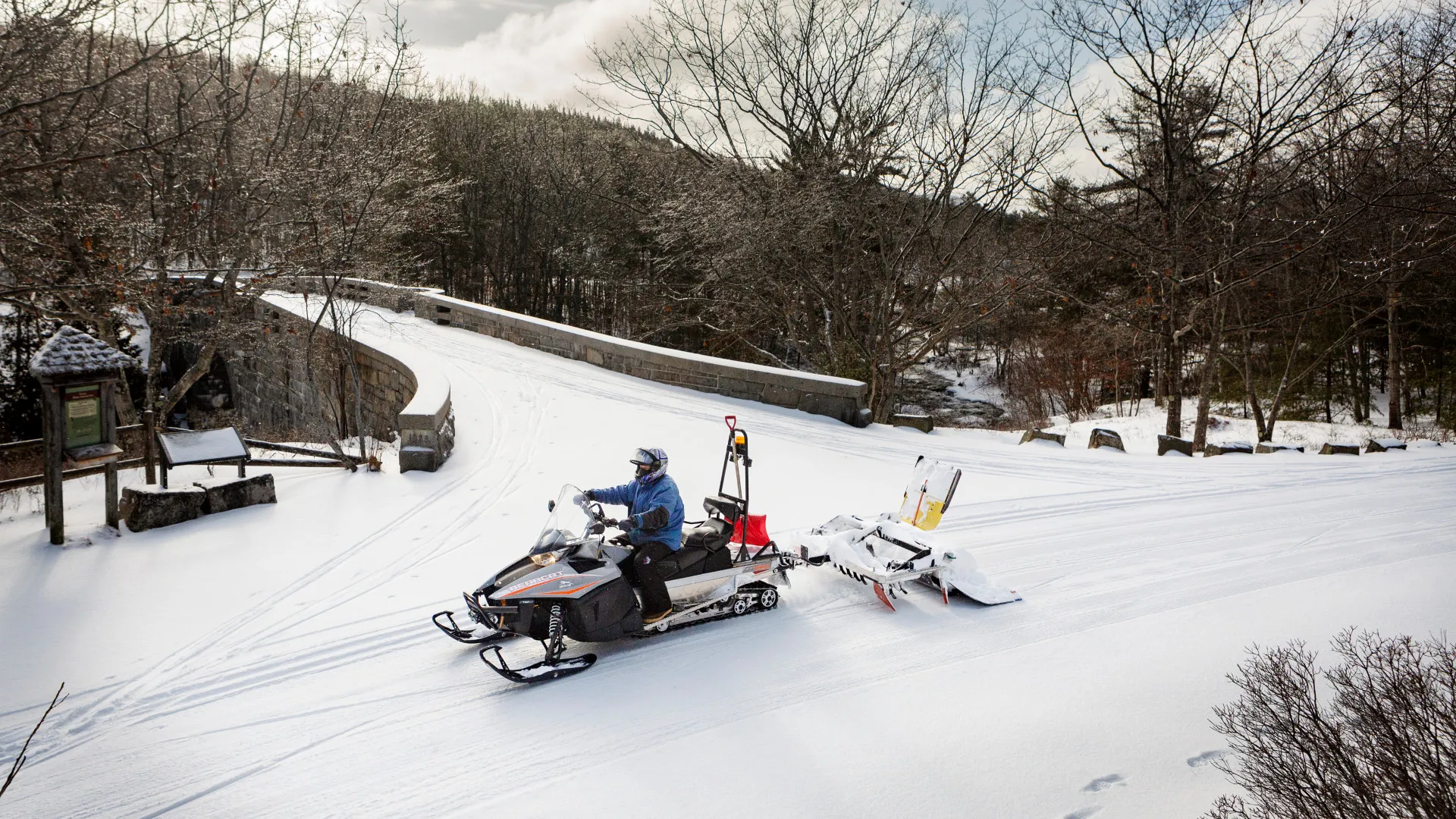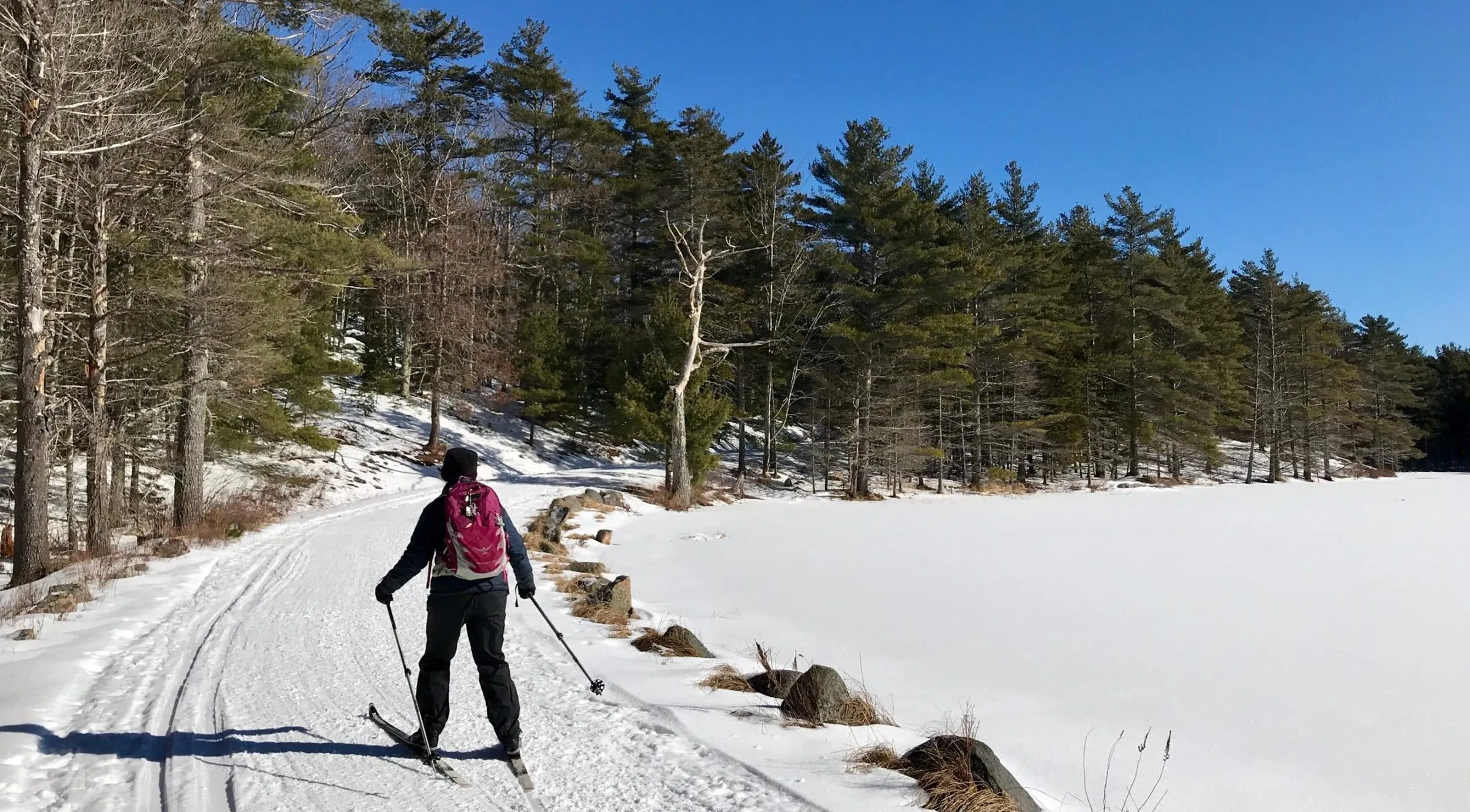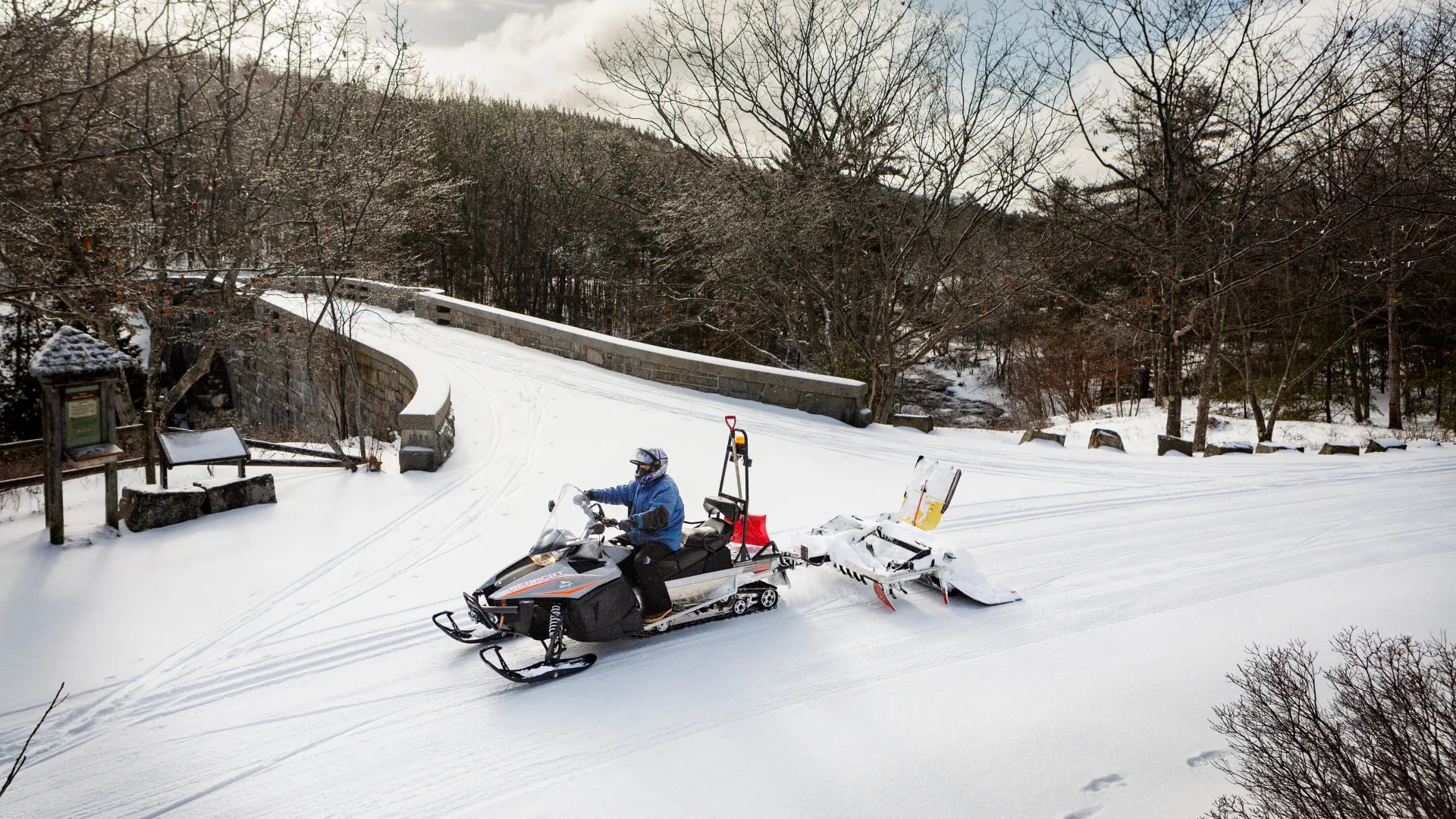
Acadia National Park in Winter: Your Complete Guide to Winter Wonderland Adventures
Having spent countless winters exploring Maine's pristine wilderness, I can confidently say that Acadia National Park in winter transforms into an absolutely magical wonderland. This comprehensive guide covers everything you need to know about winter activities, from cross-country skiing the historic carriage roads to snowshoeing through snow-laden forests, ensuring you make the most of your winter adventure in America's crown jewel.
Winter Overview & Access

After visiting Acadia National Park in winter for over a decade, I've witnessed firsthand how this Maine treasure transforms into a serene wonderland that few visitors ever experience. While most of the 3+ million annual visitors come during the bustling summer months, winter offers an intimate opportunity to explore this magnificent landscape in peaceful solitude.
From December 1st through April 14th, most of the Park Loop Road closes to vehicle traffic, creating an incredible playground for winter enthusiasts. However, two crucial sections remain accessible: Ocean Drive from Schooner Head Road to Otter Cliff Road, and Jordan Pond Road through Seal Harbor. These maintained areas provide access to some of the park's most spectacular winter hiking opportunities.
What makes Acadia National Park in winter truly special is the 45 miles of historic carriage roads that become groomed cross-country skiing trails. The Acadia Winter Trails Association volunteers work tirelessly to maintain nearly 32 miles of these roads when snow conditions permit, creating some of the finest Nordic skiing experiences on the East Coast.
During my winter explorations, I've discovered that the park averages about 60 inches of snowfall annually, with conditions typically excellent from January through March. The entrance station at Schooner Head Road remains open year-round, where you can purchase your required park pass and get up-to-date information on trail conditions and nearby dining options for warming up after your adventures.
Cross-Country Skiing Paradise
The crown jewel of winter activities in Acadia National Park in winter is undoubtedly cross-country skiing on John D. Rockefeller Jr.'s historic carriage roads. These perfectly graded, crushed-stone pathways were designed with gentle grades perfect for horse-drawn carriages, making them ideal for both novice and experienced Nordic skiers.
Popular Skiing Routes
During my numerous skiing expeditions, I've identified several standout routes. The Eagle Lake Loop (6 miles) provides stunning mountain vistas and is perfect for beginners. When the lake freezes solid, you can ski directly across its surface for an even flatter experience. The Jordan Pond Path offers spectacular views of the Bubbles mountains reflected in the frozen pond.
For more adventurous skiers, the Around the Mountain Loop presents an epic 11-mile journey circumnavigating Parkman, Sargent, and Penobscot mountains. This challenging route reaches 700 feet in elevation and crosses seven of Rockefeller's magnificent stone bridges. I recommend starting early and bringing plenty of supplies from local shops for this all-day adventure.
Professional XC ski boots for carriage road adventures
Full cross-country ski setup with bindings
The grooming typically begins when snowfall exceeds six inches and the roadbed is frozen solid. The volunteers create separate tracks for traditional skiing, while the center lanes accommodate skate skiing. This thoughtful design ensures everyone can enjoy Acadia National Park in winter regardless of their skiing style or experience level.
Winter Hiking Adventures

Winter hiking in Acadia National Park in winter offers an entirely different perspective on familiar trails. The landscape becomes dramatically transformed, with granite ledges glazed in ice and forest paths carpeted in pristine snow. However, winter hiking requires serious preparation and the right equipment for safety.
My favorite winter hiking destination is Cadillac Mountain via the South Ridge Trail. This 6.7-mile out-and-back journey provides spectacular 360-degree views from Maine's highest peak along the Atlantic coast. The exposed granite sections can be treacherous when icy, making microspikes or crampons absolutely essential. I've hiked this trail in various winter conditions, and the sunrise views are simply unforgettable.
Gorham Mountain presents another excellent winter hiking option, accessible via the maintained Ocean Drive section. The 3-mile loop provides stunning coastal views and takes you past the commemorative plaque honoring Waldron Bates, who created many of Acadia's original trails in the 1800s. This trail works well for families and intermediate hikers exploring Acadia National Park in winter.
Essential Winter Hiking Safety Tips
- Always carry traction devices (microspikes or crampons)
- Bring extra layers and emergency shelter
- Pack headlamp with extra batteries (daylight is limited)
- Inform someone of your hiking plans and expected return time
Great Head Trail offers dramatic coastal scenery accessible from Sand Beach. This 1.8-mile loop showcases Acadia's rugged coastline transformed by winter storms. The trail involves some steep sections but rewards hikers with breathtaking views of Otter Cliffs and the surrounding islands. During winter visits, I often spot seals and various seabirds that call this coast home year-round.
For those seeking a gentler winter experience, the Jesup Path provides an easy 2.2-mile boardwalk trail perfect for families. This beautiful path winds through wetlands and offers excellent wildlife viewing opportunities. I've encountered deer, foxes, and numerous bird species along this peaceful route, making it ideal for introducing children to the wonders of Acadia National Park in winter.
Snowshoeing Trails

Snowshoeing provides the perfect way to explore Acadia National Park in winter at a relaxed pace while accessing areas that might be challenging for skiing or hiking. The park's carriage roads offer ideal snowshoeing terrain, with their gentle grades and wide surfaces accommodating users of all experience levels.
My preferred snowshoeing route is the Witch Hole Pond Loop, a scenic 6.5-mile circuit beginning from the Eagle Lake parking area. This trail takes you past Paradise Hill with spectacular views of Frenchman Bay, then winds around the pond's frozen surface. I've frequently spotted beaver lodges and other wildlife signs along this peaceful route, making it excellent for nature photography.
The Amphitheater Loop presents another outstanding snowshoeing opportunity, starting from the Brown Mountain Gatehouse. This 4.4-mile route takes you into the remote valley beneath Penobscot Mountain, crossing the longest of Rockefeller's historic stone bridges. The secluded feeling and pristine winter scenery make this trail a local favorite for snowshoeing in Acadia National Park in winter.
Complete snowshoe kit with trekking poles and carry bag
Lightweight snowshoes with EVA padded bindings
For mountain snowshoeing adventures, Beech Mountain offers moderately challenging terrain with rewarding summit views. The 533-foot peak provides panoramic vistas of Long Pond and the surrounding mountains. The trail requires some navigation skills in winter conditions, as snow can obscure trail markers, but the views are absolutely worth the effort.
When snowshoeing the carriage roads, it's important to respect the groomed ski tracks. Snowshoers should stay on one edge of the trail, leaving the tracked center for skiers. This etiquette ensures everyone can enjoy Acadia National Park in winter harmoniously. I always recommend checking with local outfitters for current conditions and trail recommendations before heading out.
Essential Winter Gear

After years of winter adventures in Acadia National Park in winter, I've learned that having the right gear can make the difference between a magical experience and a miserable one. Maine's coastal winter conditions can change rapidly, with temperatures fluctuating and weather systems moving in quickly from the Atlantic.
Traction devices are absolutely essential for any winter activity in Acadia. The granite surfaces become incredibly slippery when covered with ice, and I never venture out without my microspikes or crampons. These devices have saved me from numerous potential falls on icy trail sections and rocky outcrops.
Premium traction for icy trails and granite surfaces
19-spike crampons for secure winter hiking
Layering is crucial for comfort and safety in Acadia National Park in winter. I always start with moisture-wicking base layers, add insulating middle layers, and finish with a waterproof shell. The coastal location means conditions can range from dry snow to freezing rain within the same day.
Emergency preparedness cannot be overstated when exploring Acadia's winter landscape. I always carry a headlamp with extra batteries (winter days are short), emergency shelter, fire-starting materials, and extra food. Cell phone coverage is spotty in many areas, so self-reliance is essential.
For those planning water activities in warmer months, winter visits provide excellent reconnaissance opportunities. I often use winter hikes to scout locations for future kayaking adventures, taking note of access points and scenic spots that will be accessible when the snow melts.
Don't forget about navigation tools – GPS devices, detailed maps, and compass are vital when snow obscures familiar landmarks. I recommend downloading offline maps to your phone as a backup, though you should never rely solely on electronic devices in winter conditions. The park's trail blazes may be snow-covered, making navigation more challenging than in other seasons.
Conclusion
Acadia National Park in winter offers an unparalleled opportunity to experience one of America's most beloved parks in pristine tranquility. From the groomed perfection of the carriage roads for cross-country skiing to the challenging mountain peaks accessible to winter hikers, every visit reveals new perspectives on this coastal treasure.
My countless winter adventures have taught me that proper preparation and respect for the environment are essential for safe, enjoyable experiences. The park's winter beauty – from snow-laden pine boughs to ice-formed waterfalls – provides memories that last a lifetime.
Whether you're seeking the meditative rhythm of Nordic skiing, the challenge of winter mountaineering, or the peaceful exploration possible with snowshoes, Acadia National Park in winter delivers experiences that summer visitors never imagine. The solitude, pristine landscapes, and unique wildlife viewing opportunities make winter the secret season for truly discovering Acadia's magic.
Ready to plan your winter adventure? Check out our complete winter guide for more detailed information and current conditions.

